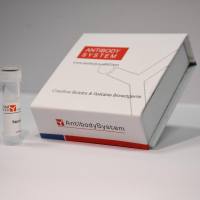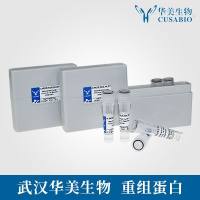Exploration of the Visual System: Part 2: In Vivo Analysis Methods: Virtual‐Reality Optomotor System, Fundus Examination, and Fluorescent Angiography
互联网
- Abstract
- Table of Contents
- Materials
- Figures
- Literature Cited
Abstract
The mouse has emerged as an animal model for many diseases. At IRO, we have used this animal to understand the development of many eye diseases and treatment of some of them. Precise evaluation of vision is a prerequisite for both these approaches. In this unit we describe three ways to measure vision: testing the optokinetic response, and evaluating the fundus by direct observation and by fluorescent angiography. Curr. Protoc. Mouse Biol. 2:207?218 © 2012 by John Wiley & Sons, Inc.
Keywords: ophthalmology; optokinetic response; spatial frequency; contrast sensitivity; fundus; fluorescent angiography
Table of Contents
- Introduction
- Strategic Planning
- Basic Protocol 1: Virtual‐Reality Optomotor System (VOS)
- Basic Protocol 2: Anesthesia and Eye Care to Perform Fundus Photography and Fluorescein Angiography
- Reagents and Solutions
- Commentary
- Literature Cited
- Figures
- Tables
Materials
Basic Protocol 1: Virtual‐Reality Optomotor System (VOS)
Materials
Basic Protocol 2: Anesthesia and Eye Care to Perform Fundus Photography and Fluorescein Angiography
Materials
|
Figures
-
Figure 1. Screen display of the OptoMotry controller (Stimulus – Gratings). Spatial Frequency: a measure of how often the gratings repeat per unit of distance in cycles/degree (c/d). Contrast: difference between light and dark gratings. Drift Speed: velocity of the gratings. View Image -
Figure 2. Screen display of the OptoMotry controller (Stimulus – Calibration). Screen Width: size of the screen in the box. Screen Distance: distance between gratings in the box. Angle: varies with screen width and screen distance. Radius: varies with screen width and screen distance. Max Frequency: maximal spatial frequency being tested. View Image -
Figure 3. Screen display of the OptoMotry controller (Camera – Video In). Frame Rate: number of pictures per time unit. Display: size of camera screen on computer. Magnification: size of the platform on the camera screen. iSight Focus: focus distance. View Image -
Figure 4. Screen display of the OptoMotry controller (Camera – Calibration). Camera Calibration: number of pixels/cm. Camera Y: Y offset. Camera X: X offset. View Image -
Figure 5. Screen display of the OptoMotry controller (Cameral – Overlays). Compass Size: size of the circle in the center of the compass. Cursor Size: size of the cursor. Tick Spacing: distance between the arms of the compass. Tick Size: thickness of the compass arms. Color: color of compass and cursor. Please also refer to the inset legend in Figure 10. View Image -
Figure 6. Screen display of the OptoMotry controller (Testing – Psychophysics). Psychophysical Method: testing method. Threshold: frequency or contrast. Directions: determines how grating direction changes during test. Max of “X” Reversals: Number of direction changes. View Image -
Figure 7. Screen display of the OptoMotry controller (Testing – Options). Feedback : when speech option is active, the computer sound system confirms the various options. Responses : options available to the user, Yes/No; clockwise/counter clockwise; static or Gray A/B interval. Reset To determines the parameters invoked when the Reset button is activated. View Image -
Figure 8. Screen display of the OptoMotry controller (Testing – Blanking). The system is able to blank the screen after tracking, answer, or a specific duration. Blanking parameters can be set with Tracking Blank to Black, Gray, White, 100% or to a specific frequency ( Ref Freq) determined by the Ref Frequency sliding bar. View Image -
Figure 9. Screen display of the OptoMotry controller (Testing – Presets). Preset Set : options are either calculated or based on previous publication on mouse or rat. Highest and lowest testing frequencies can be set using these sliding bars. View Image -
Figure 10. Screen display of the OptoMotry controller (Stimulus – Gratings). In this image, note that the crosshair is already visible and that the circle has been drawn (please refer to steps 7 and 8 of ). Also note that there is a legend that has been inset into this figure; this is NOT a part of the actual program, and is presented here solely to allow the reader to correlate the terms crosshair , cursor , and compass used in this manuscript with the symbols seen in the software interface. Figure 5 provides additional information about adjusting the various properties of the crosshair , cursor , and compass . View Image -
Figure 11. Screen display of the OptoMotry controller (Results – Data Log). Results are provided in this window. Both eyes are tested. Counter clockwise (CCW) rotation tests the left eye, clockwise (CW) rotation tests the right eye. Combined: mean between the two eyes. List Analysis Results : gives the results obtained for CCW, CW and combined. List Individual Trials: shows details of all the frequencies and directions tested and the result for each of them. View Image -
Figure 12. Fundus photography of a 3‐month‐old C57BL/6J mouse using the MicronIII retinal imaging microscope. The venules (V) are thicker than the arterioles (A). The optic nerve head is surrounded by the retinal vasculature. The retina appears pigmented. The depth of the camera allows focusing on retina (left panel) or retinal vasculature (right panel). View Image -
Figure 13. Fluorescein angiography of a 3‐month‐old C57BL/6J mouse using the MicronIII retinal imaging microscope. Efficient pupil dilation allowed central (left panel) and lateral (right panel) imaging before vessel leaking. View Image
Videos
Literature Cited
| Literature Cited | |
| Cowey, A., and Franzini, C. 1979. The retinal origin of uncrossed optic nerve fibres in rats and their role in visual discrimination. Exp. Brain. Res. 35:443‐455. | |
| Douglas, R.M., Alam, N.M., Silver, B.D., McGill, T.J., Tschetter, W.W., and Prusky, G.T. 2005. Independent visual thresholds measurements in the two eyes of freely moving rats and mice using a virtual‐reality optokinetic system. Vis. Neurosci. 22:677‐684. | |
| Hawes, N.L., Smith, R.S., Chang, B., Davisson, M., Heckenlively, J.R., and John, S.W.M. 1999. Mouse fundus photography and angiography: A catalogue of normal and mutant phenotypes. Mol. Vis. 5:22. | |
| Mattapallil, M.J., Wawrousek, E.F., Chan, C.C., Zhao, H., Roychoudhury, J., Ferguson, T.A., and Caspi, R.R. 2012. The Rd8 mutation of the Crb1 gene is present in vendor lines of C57BL/6N mice and embryonic stem cells and confounds ocular induced mutant phenotypes. Invest. Ophthalmol. Vis. Sci. 53:2921‐2927. | |
| McGill, T.J., Lund, R.D., Douglas, R.M., Wang, S., Lu, B., and Prusky, G.T. 2004. Preservation of vision following cell‐based therapies in a model of retinal degenerative disease. Vision Res. 44:2559‐2566. | |
| McGill, T.J., Lund, R.D., Douglas, R.M., Wang, S., Lu, B., Silver, B.D., Secretan, M.R., Arthur, J.N., and Prusky, G.T. 2007a. Syngenic Schwann cell transplantation preserves vision in RCS rat without immunosuppression. Invest. Ophthalmol. Vis. Sci. 48:1906‐1912. | |
| McGill, T.J., Prusky, G.T., Douglas, R.M., Yasumura, D., Matthes M.T., Nune, G., Donohue‐Rolfe, K., Yang, H., Niculescu, D., Hauswirth, W.W., Girman, S.V., Lund, R.D., Duncan, J.L., and LaVail, M.M. 2007b. Intraocular CNTF reduces vision in normal rats in a dose‐dependent manner. Invest. Ophthalmol. Vis. Sci. 48:5756‐5766. | |
| Morris, R.G., Garrud, P., Rawlins, J.N., and O'Keefe, J. 1982. Place navigation impaired in rats with hippocampal lesions. Nature 297:681‐683. | |
| Prusky, G.T. and Douglas, R.M. 2008. Measuring vision in the awake behaving mouse. In Eye, Retina, and Visual System of the Mouse (L.M. Chalupa and R.W. Williams, eds.) pp. 107‐117. The MIT Press, Cambridge, Mass. | |
| Prusky, G.T., West, P., and Douglas, R.M. 2000. Behavioral assessment of visual acuity in mice and rats. Vision Res. 40:2201‐2209. | |
| Prusky, G.T., Alam N.M., Beekman, S., and Douglas, R.M. 2004. Rapid quantification of adult and developing mouse spatial vision using a virtual optomotor system. Invest. Ophthalmol. Vis. Sci. 45:4611‐4616. | |
| Prusky, G.T., Alam, N.M., and Douglas, R.M. 2006. Enhancement of vision by monocular deprivation in adult mice. J. Neurosci. 26:11554‐11561. | |
| Prusky, G.T., Silver, B.D., Tschetter, W.W., Alam, N.M., and Douglas, R.M. 2008. Experience‐dependent plasticity from eye opening enables lasting, visual cortex‐dependent enhancement of motion vision. J. Neurosci. 28:9817‐9827. | |
| Tschetter, W.W., Douglas, R.M., and Prusky, G.T. 2011. Experience‐induced interocular plasticity of vision in infancy. Front. Syst. Neurosci. 5:44. |








